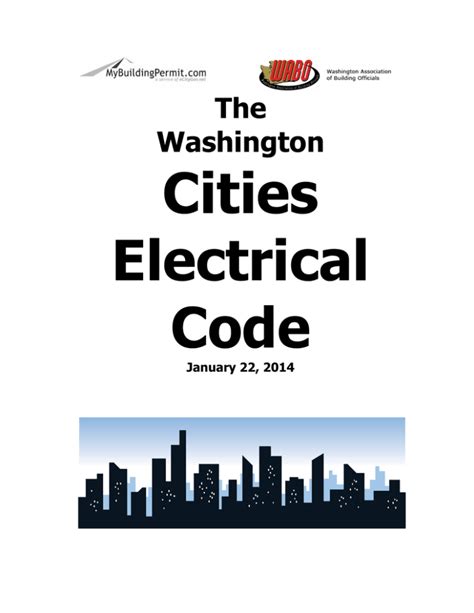code washington electrical boxes UpCodes offers a consolidated resource of construction and building code grouped by jurisdiction Junction Boxes are found in various electrical applications including enclosing wiring junctions as well as terminating lengths of cable using the adaptable junction box in conjunction with Armoured Cable Glands. It can also be used for surface mounting, within ceilings and underneath flooring in domestic and commercial buildings alike.
0 · washington state receptacle requirements
1 · washington state electrical standards
2 · washington state electrical regulations
Oldcastle Infrastructure’s underground pull boxes and handholes are the industry’s leading product choice to protect and provide access to electrical cables and transformers and are a preferred alternative to running electrical power cables above the ground and across utility poles.

(1) You must provide and maintain sufficient access and working space around all electrical equipment to permit ready and safe operation and maintenance of the equipment. (2) You must make sure equipment likely to require examination, . General requirements for wiring methods and materials. Outlet, device, pull, and junction boxes; conduit bodies; fittings; and handhole enclosures. Nonmetallic-sheathed cable. .(c) All wiring and device boxes must be protected by a steel plate a minimum of 1/16 inch thick and of appropriate width and height installed to cover the area of the wiring or box. The provisions of this chapter and NFPA 70 shall govern the design, construction, erection and installation of the electrical components, appliances, equipment and systems .
UpCodes offers a consolidated resource of construction and building code grouped by jurisdiction• These rules guide how electrical equipment is used and maintained in your workplace. They should not be used in place of your local electrical codes if you are installing electrical wiring, .Maintain electrical fittings, boxes, cabinets and outlets in good condition. You must do the following when using covers and openings: (1) When conductors enter boxes, cabinets, or .In general, the law allows a homeowner to perform electrical installation on his or her property without electrical licensing or individual certification. Although this exemption exists it does not provide the homeowner with a realization of the potential safety hazards of a substandard electrical installation.
(1) You must provide and maintain sufficient access and working space around all electrical equipment to permit ready and safe operation and maintenance of the equipment. (2) You must make sure equipment likely to require examination, . General requirements for wiring methods and materials. Outlet, device, pull, and junction boxes; conduit bodies; fittings; and handhole enclosures. Nonmetallic-sheathed cable. Power and control tray cable—Type TC. Electrical metallic tubing. Concealed knob-and-tube wiring. Switchboards, switchgear, and panelboards.
washington state receptacle requirements
(c) All wiring and device boxes must be protected by a steel plate a minimum of 1/16 inch thick and of appropriate width and height installed to cover the area of the wiring or box. The provisions of this chapter and NFPA 70 shall govern the design, construction, erection and installation of the electrical components, appliances, equipment and systems used in buildings and structures covered by this code.UpCodes offers a consolidated resource of construction and building code grouped by jurisdiction• These rules guide how electrical equipment is used and maintained in your workplace. They should not be used in place of your local electrical codes if you are installing electrical wiring, electrical circuits or electrical distribution equipment. • This rule applies to 600 volts or less.
Maintain electrical fittings, boxes, cabinets and outlets in good condition. You must do the following when using covers and openings: (1) When conductors enter boxes, cabinets, or fittings: (a) Protect the conductor (wires) from abrasion. (b) Effectively close the openings where conductors enter. (c) Effectively close all unused openings.This chapter covers the wiring methods for services, feeders and branch circuits for electrical power and distribution. (300.1) E3801.2 Allowable wiring methods.
Chapters 34 through 43 shall cover the installation of electrical systems, equipment and components indoors and outdoors that are within the scope of this code, including services, power distribution systems, fixtures, appliances, devices and appurtenances.In general, the law allows a homeowner to perform electrical installation on his or her property without electrical licensing or individual certification. Although this exemption exists it does not provide the homeowner with a realization of the potential safety hazards of a substandard electrical installation.(1) You must provide and maintain sufficient access and working space around all electrical equipment to permit ready and safe operation and maintenance of the equipment. (2) You must make sure equipment likely to require examination, .
General requirements for wiring methods and materials. Outlet, device, pull, and junction boxes; conduit bodies; fittings; and handhole enclosures. Nonmetallic-sheathed cable. Power and control tray cable—Type TC. Electrical metallic tubing. Concealed knob-and-tube wiring. Switchboards, switchgear, and panelboards.(c) All wiring and device boxes must be protected by a steel plate a minimum of 1/16 inch thick and of appropriate width and height installed to cover the area of the wiring or box. The provisions of this chapter and NFPA 70 shall govern the design, construction, erection and installation of the electrical components, appliances, equipment and systems used in buildings and structures covered by this code.
UpCodes offers a consolidated resource of construction and building code grouped by jurisdiction• These rules guide how electrical equipment is used and maintained in your workplace. They should not be used in place of your local electrical codes if you are installing electrical wiring, electrical circuits or electrical distribution equipment. • This rule applies to 600 volts or less.
washington state electrical standards
Maintain electrical fittings, boxes, cabinets and outlets in good condition. You must do the following when using covers and openings: (1) When conductors enter boxes, cabinets, or fittings: (a) Protect the conductor (wires) from abrasion. (b) Effectively close the openings where conductors enter. (c) Effectively close all unused openings.
This chapter covers the wiring methods for services, feeders and branch circuits for electrical power and distribution. (300.1) E3801.2 Allowable wiring methods.

washington state electrical regulations
$14.99
code washington electrical boxes|washington state electrical regulations